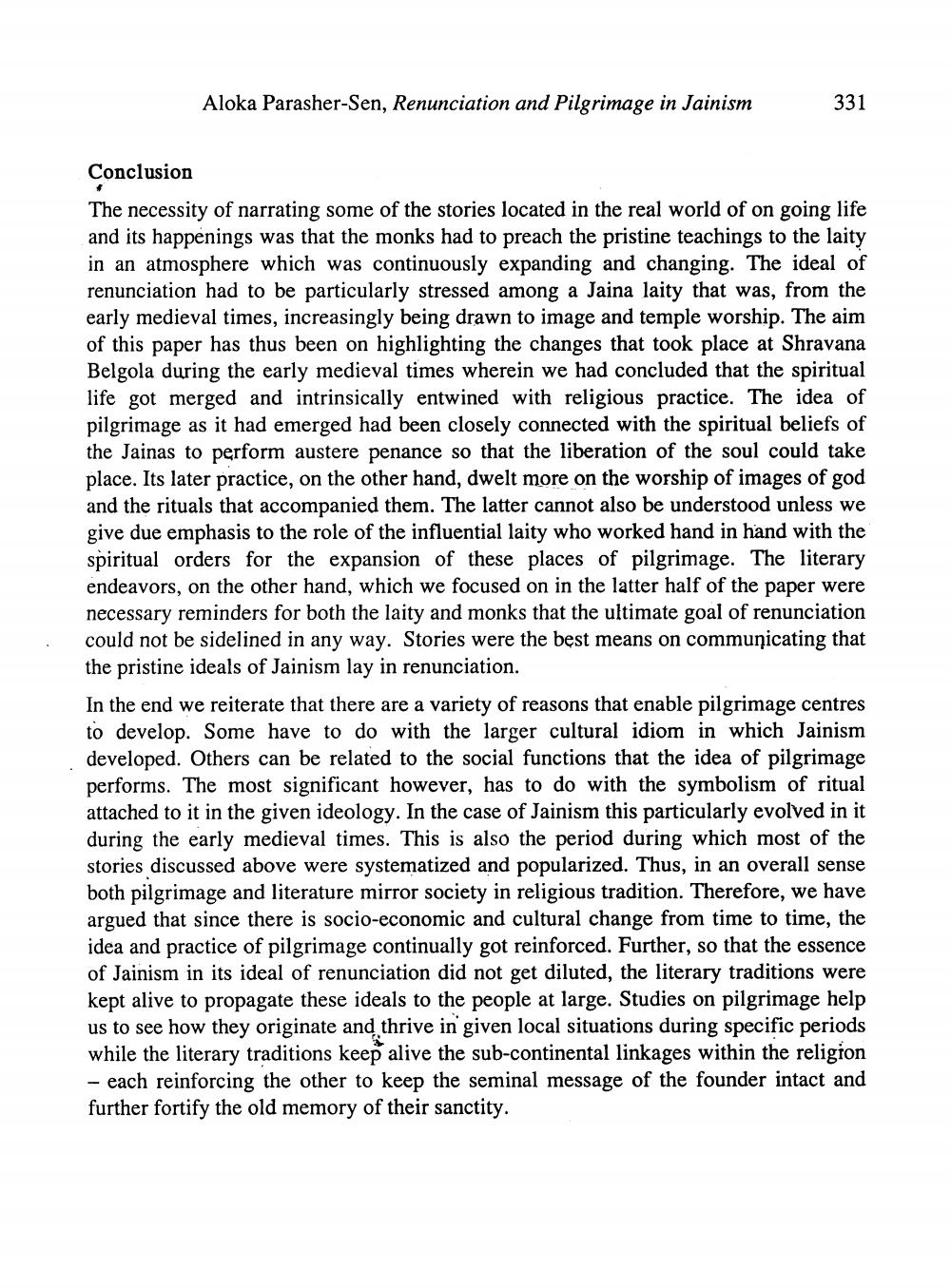________________
Aloka Parasher-Sen, Renunciation and Pilgrimage in Jainism
331
Conclusion The necessity of narrating some of the stories located in the real world of on going life and its happenings was that the monks had to preach the pristine teachings to the laity in an atmosphere which was continuously expanding and changing. The ideal of renunciation had to be particularly stressed among a Jaina laity that was, from the early medieval times, increasingly being drawn to image and temple worship. The aim of this paper has thus been on highlighting the changes that took place at Shravana Belgola during the early medieval times wherein we had concluded that the spiritual life got merged and intrinsically entwined with religious practice. The idea of pilgrimage as it had emerged had been closely connected with the spiritual beliefs of the Jainas to perform austere penance so that the liberation of the soul could take place. Its later practice, on the other hand, dwelt more on the worship of images of god and the rituals that accompanied them. The latter cannot also be understood unless we give due emphasis to the role of the influential laity who worked hand in hand with the spiritual orders for the expansion of these places of pilgrimage. The literary endeavors, on the other hand, which we focused on in the latter half of the paper were necessary reminders for both the laity and monks that the ultimate goal of renunciation could not be sidelined in any way. Stories were the best means on communicating that the pristine ideals of Jainism lay in renunciation. In the end we reiterate that there are a variety of reasons that enable pilgrimage centres to develop. Some have to do with the larger cultural idiom in which Jainism developed. Others can be related to the social functions that the idea of pilgrimage performs. The most significant however, has to do with the symbolism of ritual attached to it in the given ideology. In the case of Jainism this particularly evolved in it during the early medieval times. This is also the period during which most of the stories discussed above were systematized and popularized. Thus, in an overall sense both pilgrimage and literature mirror society in religious tradition. Therefore, we have argued that since there is socio-economic and cultural change from time to time, the idea and practice of pilgrimage continually got reinforced. Further, so that the essence of Jainism in its ideal of renunciation did not get diluted, the literary traditions were kept alive to propagate these ideals to the people at large. Studies on pilgrimage help us to see how they originate and thrive in given local situations during specific periods while the literary traditions keep alive the sub-continental linkages within the religion - each reinforcing the other to keep the seminal message of the founder intact and further fortify the old memory of their sanctity.




